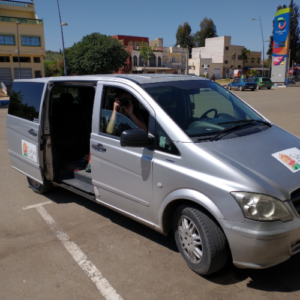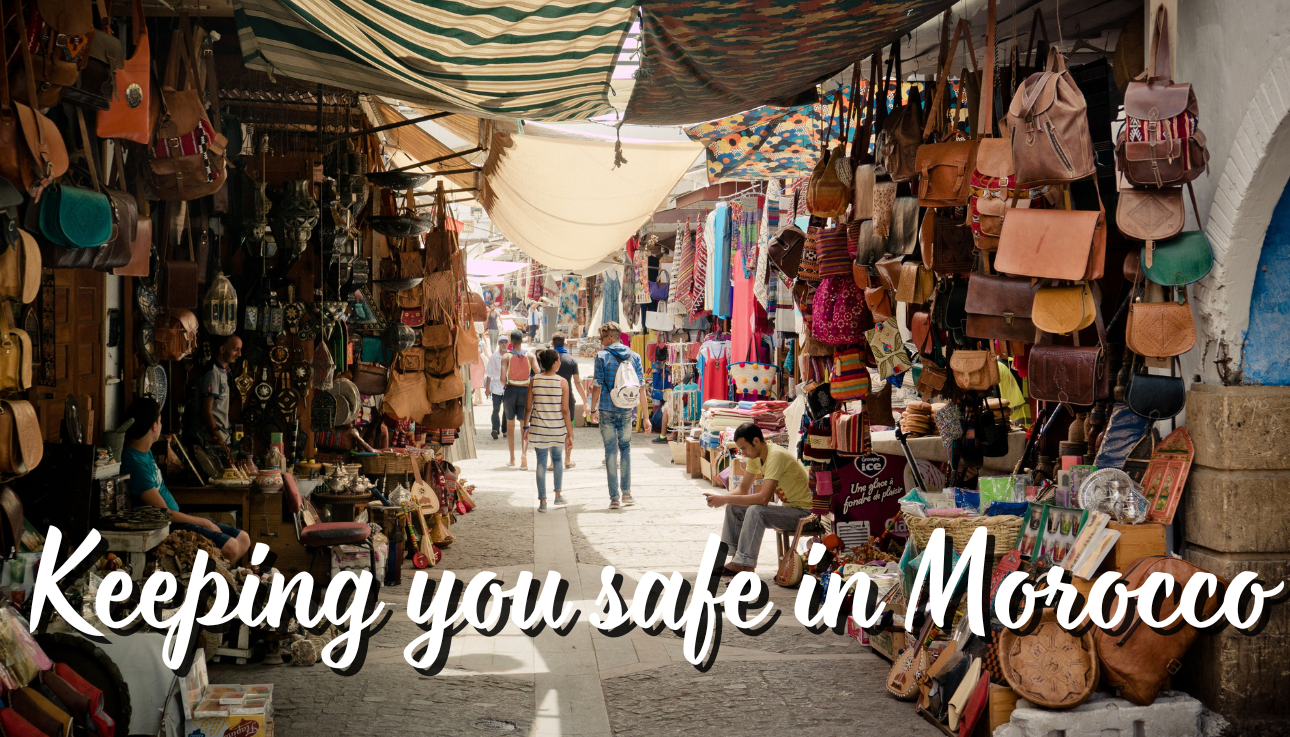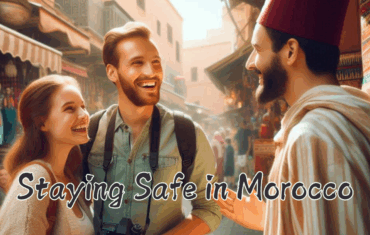At SaharaTrek, we understand that safety and security are crucial when it comes to travel. That’s why we take every measure possible to ensure that our clients have a worry-free and enjoyable experience in Morocco.
 First, we use SUVs or minivans instead of big buses. There’s nothing more obvious than a big tour bus covered with bright colors and logos filled with 60 people lumbering slowly along major roads at popular tourist destinations. By using SUVs/minivans, our clients travel more discreetly along various roads and avoid drawing attention to our clients. This smaller, less intrusive transportation also offers our clients a wider variety of destinations often missed by a big bus tour.
First, we use SUVs or minivans instead of big buses. There’s nothing more obvious than a big tour bus covered with bright colors and logos filled with 60 people lumbering slowly along major roads at popular tourist destinations. By using SUVs/minivans, our clients travel more discreetly along various roads and avoid drawing attention to our clients. This smaller, less intrusive transportation also offers our clients a wider variety of destinations often missed by a big bus tour.
Second, we use small riads away from the main streets and major tourist hotels and developments. The large, cookie-cutter tourist hotels densely packed together in specialized tourism developments offer a resort experience lacking authenticity and walkability. By using small boutique riads deep in the historic city centers, we provide our clients with a more authentic Moroccan experience and reduce their exposure to crowds and potential problems.

Third, we offer only private guided tours. If you’ve traveled, you’ve undoubtedly encountered a large herd of tourists moving slowly (and rarely stopping) with a guide in the lead like a Pied Piper. On our private tours, it’s just you and your guide, moving subtly through the medinas at your pace according to your interests.
Fourth, our professional guides and drivers have worked with us for years and exceed at meeting our high level of expectations when it comes to taking care of our clients. We maintain constant communication between SaharaTrek, guides, drivers, and clients to ensure everyone is on the same page and that potential problems can be avoided or addressed immediately.
By choosing SaharaTrek Morocco, you can enjoy peace of mind, knowing that your safety and security are our top priorities. You’ll have authentic experiences, personalized service, and the knowledge that you’re in good hands. Contact us today to learn more about our tours and how we can help you plan an unforgettable trip.




